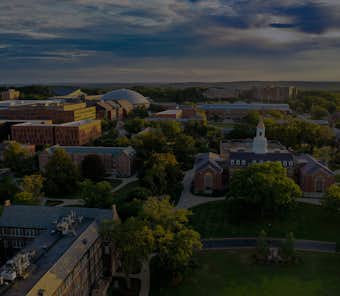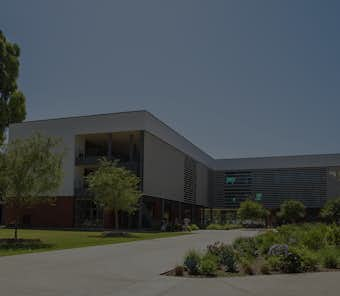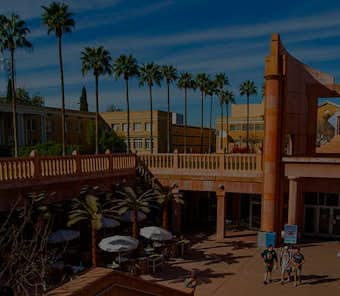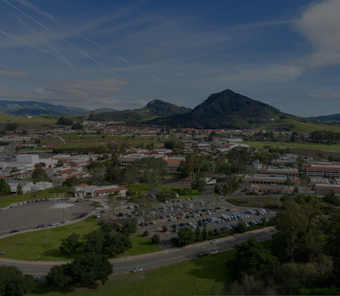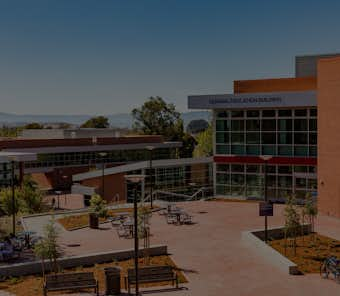
Study art history abroad
Find programs that match your eligibility and aspirations then apply with reduced application fees, a free assessment and access to a dedicated advisor.
Find your perfect art history programs abroad
Find art history programs you love that match your needs & aspirations, where you stand a high chance of acceptance.
Art History degrees abroad
Art history is the academic study of visual images over time. It analyzes how art has both influenced, and been influenced by, social, cultural, and historical contexts.
You’ll study key artists, movements, themes, and techniques as you explore the role that art has played in societies throughout history. You’ll also learn how to interpret, analyze, and write about a variety of art forms. The skills you’ll develop on an art history program will prepare you for a successful career in the art sector and beyond.
By studying abroad, you’ll have the opportunity to visit and examine influential artwork in its original environment. Immersing yourself in a country’s art culture will help you grasp a clearer understanding of an artist’s intentions and purpose and enrich your education. You’ll meet inspiring people, visit beautiful destinations, and have a great deal of fun too.

Why use Studee?
-
Find your ideal program
Filter 10,000s of programs down to a shortlist perfect for you, where you have a strong chance of getting admitted
-
Apply online via Studee
Complete our application form and enjoy reduced application fees and access to unique Studee scholarships for many universities
-
We assess within 48hrs
We complete an 85-point assessment within 2 business days, help you with improvements then submit to your university
-
University offer in 2-4 weeks
We chase the university for your admission decision and keep you updated. We all celebrate your admission!
All our services are 100% free as we're funded by universities. You pay deposits and tuition fees directly to the university.

Art History program structure
You can study art history as an undergraduate or postgraduate degree. A BA will last three or four years, depending on where you decide to study. Many universities also offer combined honors courses so that you can study art history alongside another related subject. Typical pairings include foreign languages and social sciences.
If you’ve always dreamt of studying in the US, you’ll likely choose art history as your undergraduate major. In the American liberal arts system, students improve their general education, as well as pursuing a specific interest. As such, you’ll complete liberal arts modules in the first half of your degree, before focusing entirely on art history for the latter half.
Art history is a popular choice when it comes to master’s programs. An MA usually requires one year of full-time study, or two years of part-time learning. If you’re still keen to learn more, you can enroll in a PhD program which takes an average of five years to complete.
You’ll be taught through a mixture of lectures, workshops, seminars, and one-to-one tutorials. Some universities also arrange field trips to art galleries and museums so that students can take learning beyond the textbook.
Methods of assessment vary between modules, but exams, essays, written assignments, presentations, and practical projects usually feature.
The content covered in art history programs is heavily influenced by universities’ national and cultural settings. However, most courses around the world will include these core modules:
- Historical concepts in art
- Art theories and approaches
- Aesthetics and philosophy of art
- Art methods, form, and function
- Principles of visual culture
- Research techniques in art history
- Medieval to contemporary art
- Renaissance art
Best countries to study art history
Art History study abroad programs
Art history undergraduate programs
Bachelor's in art history
-

Art & Visual Studie: Art History & Visual Culture - BA Whittier College, USA
- Program type
- Bachelor's
- Duration
- 4 years
- Annual tuition fee
-
18,924 USD
Fees are displayed in the university's local currency
- Start date
- January, August
-
Art: Art History (Tempe Campus) - BA Arizona State University (in partnership with Kaplan International), USA
- Program type
- Bachelor's
- Duration
- 4 years
- Annual tuition fee
-
32,760 USD
Fees are displayed in the university's local currency
- Start date
- August, January
-

Art: Art History - BA Colorado State University, USA
- Program type
- Bachelor's
- Duration
- 4 years
- Annual tuition fee
-
33,973 USD
Fees are displayed in the university's local currency
- Start date
- January, August
-
Art and Art History - BA Oglethorpe University, USA
- Program type
- Bachelor's
- Duration
- 4 years
- Annual tuition fee
-
39,300 USD
Fees are displayed in the university's local currency
- Start date
- June, August, January
-

Art History - BA Carleton University, Canada
- Program type
- Bachelor's
- Duration
- 4 years
- Annual tuition fee
-
31,796 CAD
Fees are displayed in the university's local currency
- Start date
- September
Associate in art history
-

Art History - AA College of the Desert, USA
- Program type
- Associate
- Duration
- 2 years
- Annual tuition fee
-
7,368 USD
Fees are displayed in the university's local currency
- Start date
- August, January
-

Art History - AA Cuesta College, USA
- Program type
- Associate
- Duration
- 2 years
- Annual tuition fee
-
12,288 USD
Fees are displayed in the university's local currency
- Start date
- August, January
-

Art History - AA-T Riverside City College, USA
- Program type
- Associate
- Duration
- 2 years
- Annual tuition fee
-
10,440 USD
Fees are displayed in the university's local currency
- Start date
- June, August, February
-

Art History - AA North Seattle College, USA
- Program type
- Associate
- Duration
- 2 years
- Annual tuition fee
-
12,445 USD
Fees are displayed in the university's local currency
- Start date
- June, September, January, April
-

Art History - AA-T Santa Monica College, USA
- Program type
- Associate
- Duration
- 2 years
- Annual tuition fee
-
9,264 USD
Fees are displayed in the university's local currency
- Start date
- June, August, January, February
Certificate in art history
-

Art History - Cert Langara College, Canada
- Program type
- Undergraduate certificate
- Duration
- 8 months
- Annual tuition fee
-
19,138 CAD
Fees are displayed in the university's local currency
- Start date
- September, January, May
Art history graduate programs
Master's in art history
-

Art History - MAAH Queen's University, Canada
- Program type
- Master's
- Duration
- 2 years
- Annual tuition fee
-
15,166 CAD
Fees are displayed in the university's local currency
- Start date
- September
-
Art History - MA John Cabot University, Italy
- Program type
- Master's
- Duration
- 15 months
- Annual tuition fee
-
20,000 EUR
Fees are displayed in the university's local currency
- Start date
- September
-

Art History - MA Victoria University of Wellington, New Zealand
- Program type
- Master's
- Duration
- 1 year
- Annual tuition fee
-
22,670 NZD
Fees are displayed in the university's local currency
- Start date
- July, August, September, October, November, January, February, March, April, May, June
-
Art History - MA American University, USA
- Program type
- Master's
- Duration
- 2 years
- Annual tuition fee
-
34,596 USD
Fees are displayed in the university's local currency
- Start date
- September, January
-

Art History - MA McGill University, Canada
- Program type
- Master's
- Duration
- 2 years
- Annual tuition fee
-
19,728 CAD
Fees are displayed in the university's local currency
- Start date
- January, September
Doctorate in art history
-

Art History - PhD University of Canterbury, New Zealand
- Program type
- Doctorate
- Duration
- 1 year
- Annual tuition fee
-
7,099 NZD
Fees are displayed in the university's local currency
- Start date
- June, July, August, September, October, November, January, February, March, April, May
Future art history careers
An art history degree will arm you with a number of specific and transferable skills, including critical analysis, observation, and communication. Several career paths will open up for you, and many art history graduates go on to secure interesting roles, including:
- Museum or gallery manager
- Museum or gallery curator
- Exhibitions officer
- Conservator
- Archivist
- Arts administrator
- Teacher
- Art critic
Undertaking voluntary placements and internships is a great way of gaining experience and boosting your employability. Your university’s career service can support you with contacting local galleries and museums.









